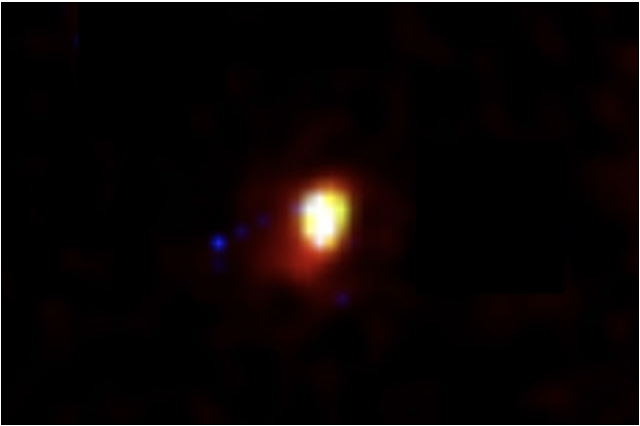According to the James
Webb Space Telescope, which has only been observing the sky for a few weeks,
there are tens, hundreds, or even 1000 times more bright galaxies at the edge
of space-time (soon after the big bang) than astronomers predicted.
"No one expected
anything like this," says University of Texas at Austin's Michael
Boylan-Kolchin. "Galaxies are exploding out of nowhere," says
Flatiron Institute's Rachel Somerville.
Because gas clouds are
thought to condense much more slowly than Webb's galaxy-rich photos of the
early universe, taken less than 500 million years after the big bang, galaxy
formation models may need to be revised.
According to Garth
Illingworth of the University of California (UC), Santa Cruz, this is "way
outside the box" of what the models predicted.
The NASA-led Webb
orbiting observatory, which also received funding from the Canadian and
European space agencies, began taking observations late in June from its
vantage point 1.5 million kilometres above Earth.
It has spent the
majority of its time so far working on demonstration projects such as the
Cosmic Evolution Early Release Science (CEERS) Survey. The Webb Space Telescope
is designed to go deeper into cosmic history than the Hubble Space Telescope.
The James Webb Space
Telescope photographed this galaxy from an unprecedented distance. CLARA
POLLOCK/SOPHIE JEWELL
Webb's 6.5-meter
mirror, which has six times the area of Hubble's and operates at infrared
wavelengths, makes it more sensitive to such distant sources, whose light is
stretched to longer, redder wavelengths by cosmic expansion.
Webb discovered a
candidate galaxy within days of beginning its observations, which would have
been the most distant object ever observed if it had been visible when the
universe was only 230 million years old, or 1.7% of its current age.
Since then, surveys
have revealed that the object is just one of a dazzling array of early
galaxies, each of which is modest by modern standards but has a higher
luminosity than expected.
Some scientists warn
that the abundance may be a mirage based on photos of a small piece of sky.
Boylan-Kolchin wonders if Webb "lucked out" when he looked into a
massive cluster of galaxies that was denser than the rest of the early
universe.
That question will be
answered when CEERS expands its scope later this year and the results of
additional comprehensive surveys are available.
Webb's early scientific
teams discovered a few of these posing galaxies, as reported in a number of
recent preprints. If the abundance of early galaxies is real, astronomers may
have to fundamentally rethink galaxy formation or the dominant cosmology.
According to Charlotte
Mason of the Niels Bohr Institute, Hubble research has revealed that star
formation has occurred at a relatively consistent rate for up to 600 million
years after the big bang. However, the Webb data indicate that it was moving at
a much faster rate in previous eras—so quickly, in fact, that gas clouds were
collapsing without any restraint from heat or supernovae.
Indeed, Tommaso Treu of
the University of California, Los Angeles, who leads the GLASS Webb survey,
claims that his team is seeing these young galaxies "form stars like
crazy." "They look like giant balls of star formation and nothing
else," he adds.
James Webb has already
broken numerous astronomical records, and we can't wait to see what happens
next.
Reference: Research paper






0 Comments